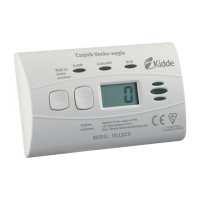3
1. What is Carbon Monoxide?
Carbon monoxide (CO) is a highly poisonous gas that has no taste, colour or smell.
Potenal Sources of CO
• Wood-burning stoves
• Gas boilers and fires
• Gas Hobs
• Oil and coal burning appliances
• Portable gas heaters
• Blocked flues and chimneys
• Fumes from integral garages
• Barbecues
• High concentraons of tobacco smoke
This CO alarm is no substute for proper maintenance of your
appliances.
Carbon monoxide can be produced from poorly burning appliances
or from blocked flues and chimneys.
If your alarm has sounded and you have venlated the room the CO
may have dispersed before help arrives. It is crucial that the source
of CO is determined and appropriate maintenance carried out.
Carbon monoxide is a cumulave poison meaning long-term exposure to low levels may cause
symptoms. This alarm is me-weighted – the higher the level of CO, the sooner it will alarm.
NOTE: The apparatus may respond to brief exhaust gas emissions, for example during the inial
start-up of an appliance. Also, hydrogen acts as an interferent and can arise from some baery
charging acvies and the curing of concrete or cement under certain circumstances. Volale
Organic Compounds (VOCs), e.g. alcohols, which may eventually acvate the alarm, can be
generated from use of damp-proofing materials or other coangs containing alkylalkoxysilanes.

